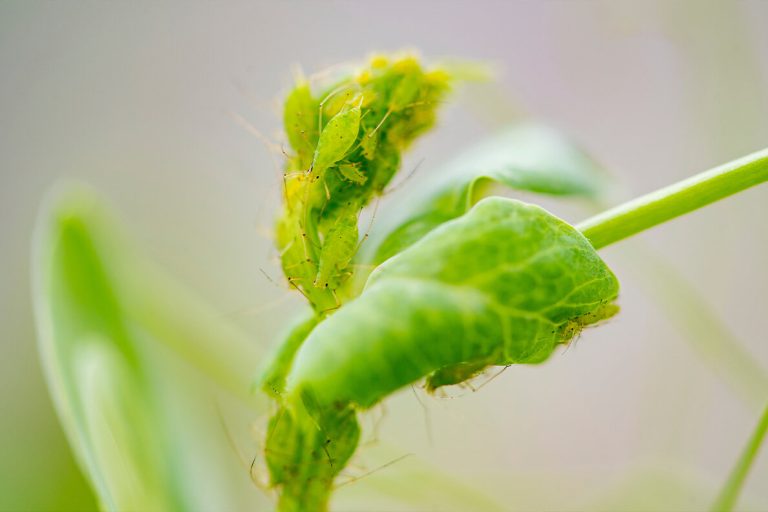The dining time of different insects impacts a plant’s defenses and nutritional quality — a complexity uncovered in new research with implications for pest management strategies.
A piercing-sucking, virus-carrying aphid has long been a source of concern for pea plant growers, but a seemingly harmless weevil that only eats little nibbles off leaves has been discovered to have an important role in plant health. Weevils can improve or diminish the plant’s ability to fight the virus depending on whether they consume before or after the aphids.
While many studies have looked at the effects of a single pest, this study, which was published online on August 4 in Molecular Ecology, is one of the few to look at the interactions of multiple antagonists, in this case two bugs and a virus.
“Plants in the field may be subjected to a variety of biotic stress components, which we refer to as antagonists,” said Saumik Basu, a WSU postdoctoral fellow and the study’s primary author. “How these antagonists are delivered to the plants can alter their responses, which can lead to variations in their overall output.”
Basu and colleagues from WSU’s Crowder Laboratory and Cornell University used greenhouse studies to try to figure out what occurs to the pea plant fields in Eastern Washington’s Palouse region. Pea leaf weevils, Sitona lineatus, and pea aphids, Acrythosiphon pisum, attack plants in the field, as well as a pathogen that pea aphids are known to carry, Pea enation mosaic virus. or PEMV.
The researchers conducted studies in which the weevils ate the plants first, then the aphids, and others in which the sequence was reversed. They also included a control group, as well as situations in which the plants were infected with the virus and others in which they were not.
The researchers let the plants grow for a week after eliminating the pests. The researchers next put plant samples through a series of tests to determine the amounts of defence hormones and associated defensive genes, as well as the nutritional properties of the plants.
They discovered that when the weevil eats the pea plants first, it boosts certain of the plants’ anti-pathogen defences, making them more resistant to virus infection.
If the weevil eats after the aphids, the anti-pathogen defence mechanisms are frequently reduced, allowing the virus to propagate more freely.
As a result, virus-infected plants produced more anti-herbivore chemicals, which interfered with the plant-eating pests.
Further complicating the situation, the study discovered that when weevils assisted in the induction of anti-pathogen responses, the plant’s nutrition was diminished due to a reduction in accessible amino acids.
According to Basu, these intricate connections have crucial implications for pest management.
“If we know when these interactions are going to happen ahead of time, that information gives farmers the greatest potential treatment to protect their fields,” he said.”This kind of information is really important for designing sustainable pest and pathogen management strategies.”
This research is part of a larger series looking into how plants interact with a variety of organisms. An earlier study published in Functional Ecology looked at the conflict between a plant virus and soil-dwelling nitrogen-fixing bacteria called rhizobia. The interaction of weevils with rhizobia is the subject of a new study.
According to Basu, understanding plant responses requires knowing these complicated interactions.
“In the natural world, a plant gets exposed to a variety of creatures, not just one or two,” he explained. “How the plant responds to all of these assailants is influenced by the order and complexity — how many there are, what diverse types there are, and how they interact.”







